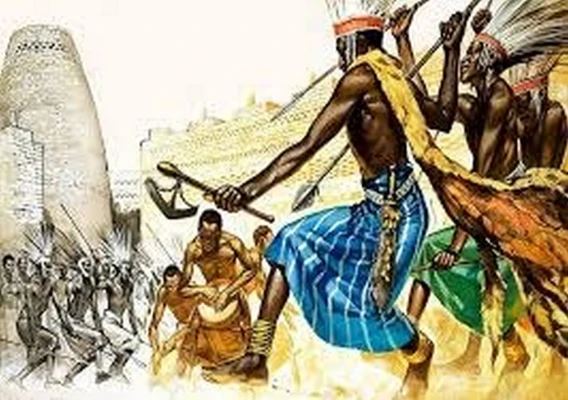Prince Owusu-ansah: A Life of...
November 13, 2025

The Katamanso War, also known as the Battle of Dodowa, stands as a significant historical event in Ghana's past, marking a decisive moment when various tribes united with the British to repel the Ashantis' attempts to dominate the coast in 1826. This conflict, classified as one of the "Anglo-Ashanti Wars," according to records at the National Archives, saw the convergence of indigenous forces and European allies against the Ashanti army.
The conflict was sparked by the Ashanti King, Osei Yaw Akoto, who sought to punish the Ga-Adangbe tribes for their support of the Fantes during the Battle of Nsamankow in 1824. Determined to pursue his adversaries, the Asantehene mobilized a formidable army, intent on asserting Ashanti dominance over the region.
On 7 August 1826, the war commenced, known as the "Battle of Dodowa." The Ashanti forces, numbering around 40,000, faced a coalition of indigenous tribes, including the Ga-Adangbe of Prampram, Ningo, and Ada, under the leadership of King Tackie Kome. Additionally, European forces from Britain, the Netherlands, and Denmark, totalling no more than 60 soldiers, provided crucial support with advanced weaponry.
The allied forces, strategically positioned at Katamanso near Dodowa, engaged the Ashanti army in a fierce battle. Led by figures like the Okyehene Nana Afia Dokuaa, the only female ruler of a major state at the time. It ultimately emerged victorious after nine hours of intense combat. This resounding triumph had a profound impact on the Ashanti Empire, diminishing its former dominance and increasing British influence along the coast.
The repercussions of the Katamanso War were far-reaching. It ushered in a period of increased stability for trading activities along the coast, instilling confidence and reducing the fear of invasion. The conflict also fostered unity among the Ga-Adangbe tribes, strengthening their collective resolve against external threats. Additionally, the prominence of Accra grew, extending its influence and attracting foreign traders seeking commercial opportunities.
Notably, the name "Katamanso" itself holds historical significance, derived from the Akan words "ka ntam" (to swear) and "na su" (to cry), symbolising the solemn oaths and mourning associated with the war. Furthermore, the introduction of the "Gyese Nkran" hairstyle worn by Ashanti women served as a poignant tribute to the fallen soldiers of the Katamanso conflict.
In essence, the Katamanso War symbolises the resilience and unity of Ghana's diverse peoples, significantly influencing the nation's development.
Explore the collection to learn more about other key historic clashes in Ghana.
November 13, 2025
November 6, 2025
November 5, 2025
November 4, 2025
October 31, 2025
October 30, 2025
October 30, 2025
October 30, 2025
September 25, 2025
September 12, 2025